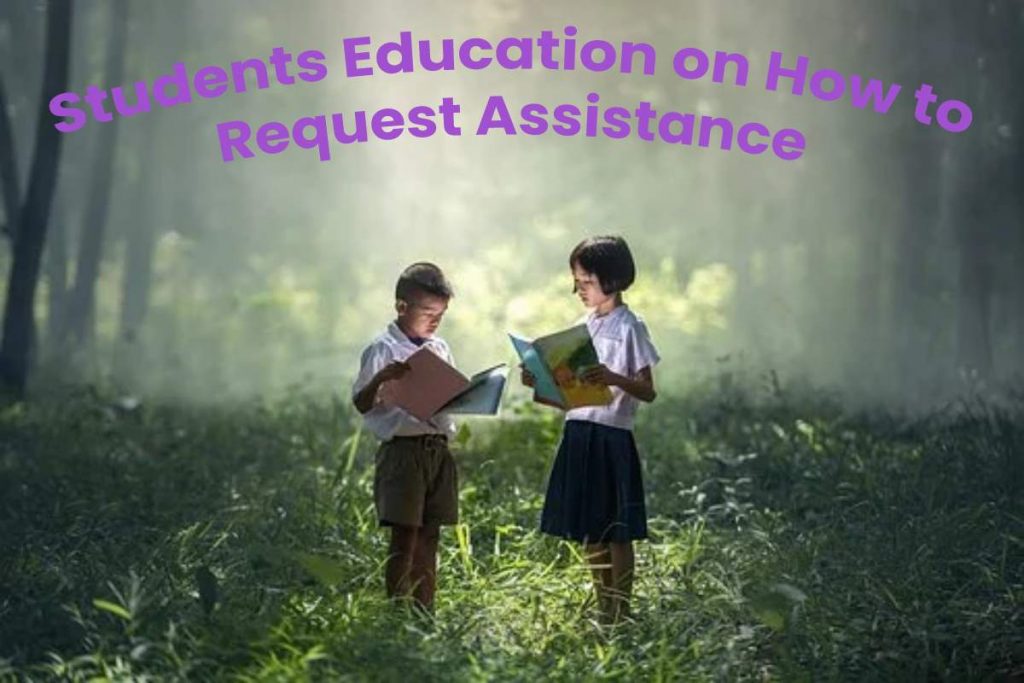Students Education
Students must first recognize that they require assistance and then remain assured that they will remain supported if they request it.
Why do students find it challenging to approach teachers for additional assistance? Why do they sit silent or bewildered when raising their hand could bring a donation? Failure to seek help can impact students’ academic performance, self-esteem, and future access to learning. There are various reasons why students find it challenging to ask for assistance. Still, the good news is that numerous strategies can assist them in becoming stronger self-advocates for their learning.
Students must first admit to themselves that they are struggling. It necessitates honesty and self-awareness—some students do not believe they require assistance, even when formal or informal assessments indicate otherwise.
When students admit they are struggling, they may experience feelings of shame or embarrassment. “I want to be independent and try it on my own,” many students have told me. “I don’t require assistance.” They are afraid that asking for help will reveal their character’s weakness or failure, even though adults can tell them that asking for help is a sign of maturity and strength.
By teaching students how to ask for help, teachers can help them understand how they learn best and empower them to be advocates for their learning.
Table of Contents
3. Ways To Improve Student Self-Advocacy Skills
1. Improve Students’ Metacognition:
Improving students’ self-reflection and metacognitive skills is one strategy for helping them recognize that they require assistance. Teachers and parents frequently serve as external monitors of student progress, but as early as elementary school, they can begin to shift the responsibility of self-monitoring to children.
Teachers can encourage and guide students to think about their learning using explicit metacognitive teaching. For example, after a test, ask students how they studied, how much time they spent studying, their test grade, and what they plan to change for the next test.
Asking open-ended questions about their learning teaches students how to assess their progress and identify areas where they excel and need help. Teachers can include metacognitive prompts like:
This project demanded a lot of effort. How did you get ready for it?
What can rate your performance in this class? How did you find out? How does this compare to previously graded work you’ve received?
Can you name one strategy you’ve used that has helped you be successful? Can you think of one design you’d like to try out more frequently?
Students Education
2. Make it Clear to Students that Teachers want to Assist them:
Asking students of any age why an adult would choose to teach as a career can be eye-opening — and often time-consuming and frequently amusing—activity
In small groups, students should pause and reflect on why they believe Teacher X became a teacher. It is even more enjoyable if Teacher X can come to your classroom to hear the ideas that have remained generated. Direct students to the final answer: “Teachers become teachers because they enjoy helping others.”
I’ve used this exercise at the start of a school year to foster relationships and demonstrate to students that I care about them and want to assist them. In addition, it enables me to approach asking for help with my students lightheartedly.
3. Generate Conversation Starters:
Introverted or shy students may feel overwhelmed or anxious about starting a conversation with their teacher. This type of conversation can be practised or acted out by shy students to boost their self-esteem. Teachers can also suggest that students use only two words to indicate that they require assistance: “I’m struggling.”
There is evidence that having students brainstorm improves their mental flexibility and creative problem-solving abilities. Role-play is talking with a teacher after they’ve thought of ways to start a conversation. It can be done in small groups in the classroom or one-on-one with a trusted teacher, social worker, parent, or another adult.
Students Education
3 Online Education Tools To Help You Assess Your Abilities And Skills

